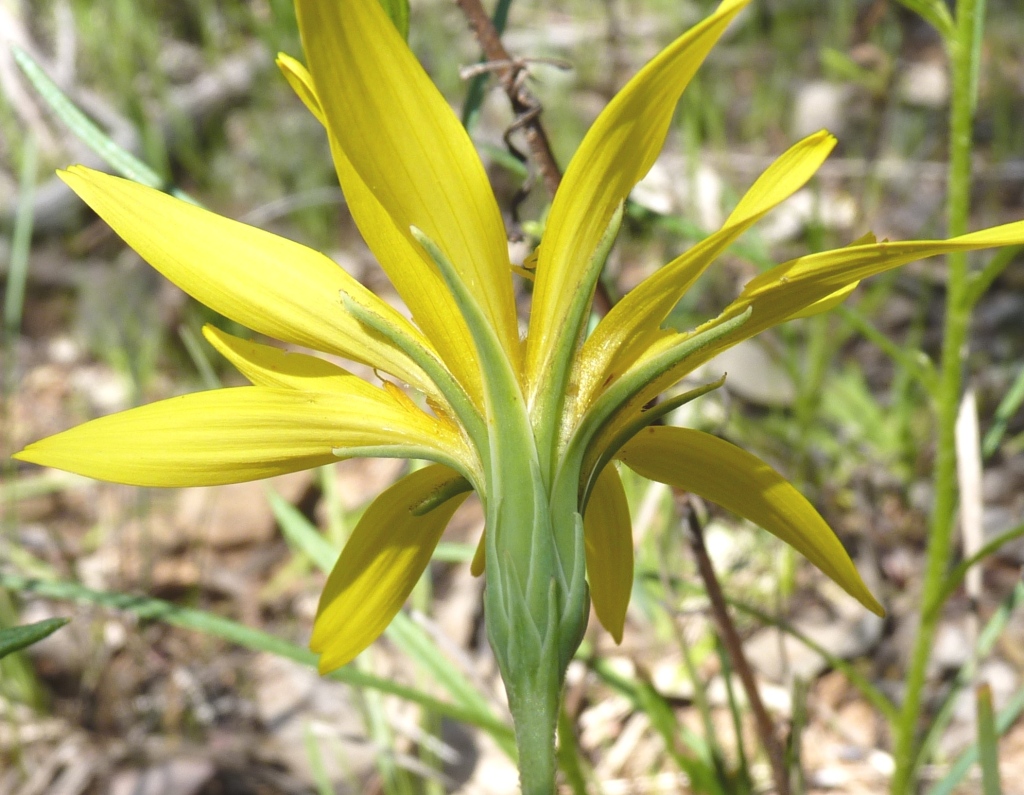Microseris walteri
Gand. Yam DaisyPerennial, 15–50 cm high, usually with a solitary, napiform to narrow-ellipsoid or narrow-ovoid tuber replaced annually (rarely more than one tuber produced or retained). Leaves linear to oblanceolate, mostly 5–30 cm long, 2–15 mm wide, entire to distantly acutely lobed. Capitula to c. 55 mm diam.; peduncles to 50 cm long, much longer than leaves; involucral bracts ovate to narrow-lanceolate, 2–20 mm long, acute. Florets 10–30; ligules 15–30 mm long, yellow, much exceeding involucre. Cypselas mostly 4–7 mm long, straw-coloured to blackish, glabrous to minutely pubescent; pappus usually of c. 10 scales, 8–15 mm long, with barbellate apices, 0.5–1.3 mm wide at base. Flowers mainly spring and summer.
LoM, MuM, Wim, GleP, VVP, VRiv, MSB, RobP, GipP, OtP, Gold, CVU, GGr, DunT, NIS, WPro, HSF, HNF, MonT, VAlp. Also WA, SA, NSW, Tas. Widespread and often locally common in Victoria, and occupying a wide range of habitats, but probably commonest in rather dry open forest.
There is a wide variation in shape and size of tubers between plants from different habitats in the State. Those from the far north-west have probably the longest tubers of those included in this entity, and are unusual in having cypselas with c. 15 pappus scales. A rare form from the volcanic plain (e.g. Woorndoo area) has a stocky, sometimes few-branched, but apparently perennial tap-root. These variants may warrant taxonomic recognition.
The capitula, like those of Microseris lanceolata, remain open for a day or more, whereas the capitula of M. scapigera (at least in Victoria) remain open for only an hour or two (Walsh 2016).
The tubers of M. walteri provided an important food source for indigenous peoples of south-eastern Australia.
 Spinning
SpinningWalsh, N.G. (2016). A name for Murnong (Microseris: Asteraceae: Cichorioideae). Muelleria 34: 63–68.



